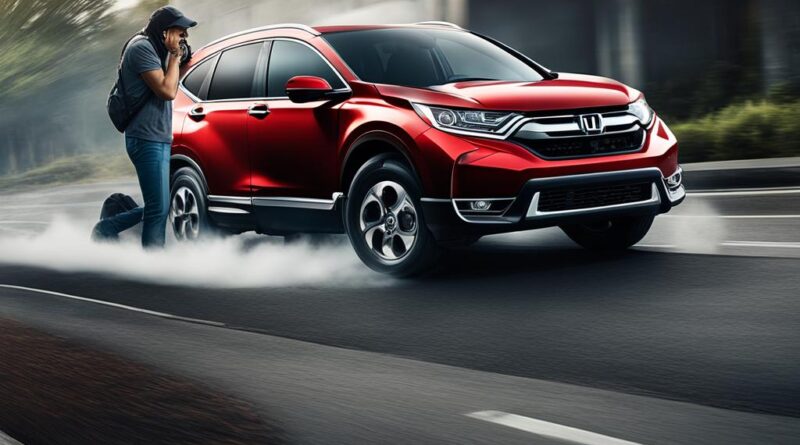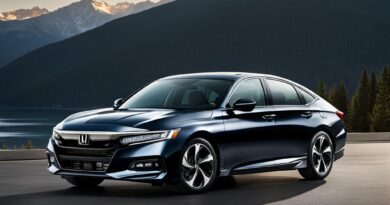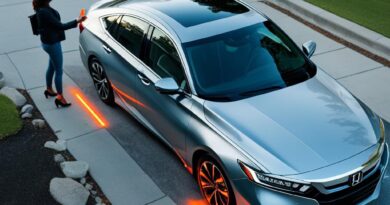Honda CR-V Years to Avoid: Buyer’s Guide
The Honda CR-V has been a popular compact crossover since its introduction in 1997. However, not all model years are created equal when it comes to reliability and common problems. In this buyer’s guide, we will explore the Honda CR-V years to avoid and provide recommendations for the best and most reliable model years.
Key Takeaways:
- It’s essential to be aware of the Honda CR-V model years that may have reliability issues and common problems.
- By understanding the worst years for the Honda CR-V, you can make an informed buying decision and avoid potential headaches.
- Researching reliable Honda CR-V model years is crucial to ensure a wise investment.
- Consider expert opinions, Honda CR-V consumer reviews, and evaluate both the positives and negatives before making a purchase.
- Next, we will delve into the various Honda CR-V generations to better understand the changes and potential issues.
Understanding Honda CR-V Generations
The Honda CR-V has gone through five generations since its inception. Each generation brought about new design changes, features, and potential issues that buyers should be aware of. Let’s take a closer look at each generation of the Honda CR-V and its model years:
First Generation (1997-2001)
The first-generation Honda CR-V was introduced in 1997 and remained in production until 2001. This generation featured a compact and practical design, making it a popular choice among families and urban drivers. However, some common issues reported by owners included transmission problems and electrical malfunctions.
Second Generation (2002-2006)
The second-generation Honda CR-V was released in 2002 and spanned until 2006. This generation introduced a more refined and spacious interior, along with improved safety features. However, some owners reported issues with the air conditioning system and engine oil leaks.
Third Generation (2007-2011)
The third-generation Honda CR-V hit the market in 2007 and continued production until 2011. It featured a sleeker exterior design, enhanced fuel efficiency, and increased cargo space. Some common problems reported by owners included excessive oil consumption and airbag recalls.
Fourth Generation (2012-2016)
The fourth-generation Honda CR-V was introduced in 2012 and lasted until 2016. This generation boasted improved fuel economy, advanced safety features, and a refined interior. However, owners reported issues such as vibration during acceleration and problems with the powertrain.
Fifth Generation (2017-present)
The current fifth-generation Honda CR-V was launched in 2017 and continues to be in production. It features a more modern and aerodynamic design, along with updated technology and driver-assistance systems. While it is relatively new, some owners have reported concerns with the infotainment system and engine stalling.
By understanding the different Honda CR-V generations and their model years, you can make an informed decision when buying a used Honda CR-V. Keep in mind that while certain generations may have had their fair share of issues, regular maintenance and thorough inspections can help mitigate potential problems.
Honda CR-V Years to Avoid: Complaints By Model Year
When looking at specific model years of the Honda CR-V, it’s important to consider owner-reported issues and complaints. From the first-generation CR-V to the fifth-generation, there have been various problems reported by owners. By analyzing these complaints, we can identify the worst years for the Honda CR-V and which ones should be avoided.
| Model Year | Common Complaints | Reliability Rating |
|---|---|---|
| 1997-2001 | Transmission failures Engine stalling Electrical issues |
2 out of 5 |
| 2002-2006 | Air conditioning problems Power window failures Suspension issues |
3 out of 5 |
| 2007-2011 | Excessive oil consumption Dashboard melting Starter motor failures |
2.5 out of 5 |
| 2012-2016 | Vibration issues Cracked tailgate AC compressor failures |
4 out of 5 |
| 2017-present | Fuel in oil contaminations CVT transmission problems Infotainment system glitches |
3.5 out of 5 |
As you can see from the table above, there are specific model years of the Honda CR-V that have experienced common complaints and lower reliability ratings. These issues can range from transmission failures and engine stalling to air conditioning problems and excessive oil consumption. It’s important to consider these factors when deciding which model year to avoid.
Owners have reported transmission failures and engine stalling as the most common issues in the first-generation Honda CR-V. These problems can lead to costly repairs and inconvenience for owners.
Additionally, the fourth-generation CR-V (2012-2016) has shown a higher reliability rating compared to other years, with fewer reported issues such as vibration, cracked tailgate, and AC compressor failures. However, it’s essential to note that no model year is entirely free of problems, and individual experiences may vary.

By being aware of the model years with the most complaints and reliability issues, you can make a more informed decision when buying a used Honda CR-V. Conduct thorough research, consider expert opinions, and inspect any potential vehicle thoroughly to ensure a reliable and satisfying ownership experience.
Recommended Honda CR-V Model Years
While you should be aware of the Honda CR-V model years to avoid, there are also years that have proven to be more reliable and highly recommended for buyers. When considering the best years for the Honda CR-V, it’s important to take into account several factors such as owner satisfaction, reliability ratings, and common issues.
By analyzing data and consumer reviews, we have identified the top recommended Honda CR-V model years:
1. 2015 Honda CR-V
The 2015 Honda CR-V has consistently received high praise for its performance, reliability, and fuel efficiency. It boasts a well-designed interior, advanced safety features, and ample cargo space, making it an ideal choice for families and individuals alike.
2. 2017 Honda CR-V
The 2017 Honda CR-V introduced a new generation that brought significant improvements in technology, style, and ride comfort. It offers a spacious and upscale cabin, impressive fuel economy, and a smooth and responsive engine.
3. 2019 Honda CR-V
The 2019 Honda CR-V continues to be a strong contender in the compact SUV segment. With its refined handling, spacious interior, and advanced safety features, it provides a comfortable and enjoyable driving experience.
4. 2021 Honda CR-V
The newest addition to the Honda CR-V lineup, the 2021 model year offers a host of updates and enhancements. It features a refreshed exterior design, improved infotainment system, and a range of safety technologies to ensure peace of mind on the road.
These recommended Honda CR-V model years have consistently shown high reliability ratings and positive consumer feedback. However, it’s important to note that individual experiences may vary, and it’s always recommended to conduct a thorough inspection and test drive before making a purchase decision.
| Model Year | Key Features |
|---|---|
| 2015 | • Reliable performance • Fuel efficiency • Spacious interior |
| 2017 | • Upgraded technology • Stylish design • Smooth ride |
| 2019 | • Refined handling • Ample cargo space • Advanced safety features |
| 2021 | • Refreshed exterior • Enhanced infotainment • Advanced safety technologies |
No matter which Honda CR-V model year you choose, it’s essential to prioritize regular maintenance and address any potential issues promptly to ensure the longevity and reliability of your vehicle.
Factors to Consider When Buying a Used Honda CR-V
In order to make a wise investment when buying a used Honda CR-V, there are several important factors that you should consider. By taking these factors into account, you can ensure that you are making an informed decision and getting the best value for your money.
- Mileage: The mileage of a used Honda CR-V is an important factor to consider. Generally, lower mileage is desirable as it indicates less wear and tear on the vehicle. However, it’s important to strike a balance and consider the vehicle’s age as well. A low-mileage car that is several years old may have spent more time sitting idle, which can also lead to issues.
- Maintenance History: It’s crucial to obtain the maintenance history of the used Honda CR-V you are considering. This includes regular servicing, repairs, and any major maintenance that has been performed. A well-documented maintenance history is a strong indicator of how well the vehicle has been cared for and can give you peace of mind about its overall condition.
- Vehicle Condition: Carefully inspect the condition of the used Honda CR-V both inside and out. Look for signs of damage, rust, or excessive wear and tear. Take note of any issues or concerns you observe during your inspection. A thorough evaluation of the vehicle’s condition will help you determine if there are any potential red flags or expensive repairs looming in the future.
- Recalls and Known Issues: Research any recalls or known issues specifically related to the model and year of the used Honda CR-V you are interested in. Check the National Highway Traffic Safety Administration (NHTSA) website for any reported recalls or consumer complaints. This will give you an understanding of any potential safety or reliability concerns you should be aware of.
By keeping these factors in mind when buying a used Honda CR-V, you can make an informed decision and increase your chances of finding a reliable and well-maintained vehicle that meets your needs and budget.

Note: The image above is for illustrative purposes only and is not directly related to any specific product or vehicle mentioned in this article.
Conclusion
In conclusion, when considering a Honda CR-V purchase, it is crucial to be diligent and well-informed. By understanding the potential issues and common problems associated with certain model years, you can avoid unnecessary headaches in the future. The Honda CR-V years to avoid may have reliability issues and a history of complaints from owners. Be cautious and steer clear of these model years to ensure a smoother ownership experience.
On the other hand, there are reliable Honda CR-V model years that come highly recommended. These models have shown a better track record in terms of owner satisfaction and overall reliability. Conduct thorough research, consult expert opinions, and consider factors such as maintenance history and any known recalls to make an informed decision.
As a prospective buyer, take the time to inspect any used Honda CR-V thoroughly before making a purchase. Mileage, vehicle condition, and a comprehensive maintenance history are crucial factors to consider. By taking these precautions and being aware of the Honda CR-V buyer’s guide, you can confidently navigate the used car market and find a Honda CR-V that meets your needs.
FAQ
What are the worst years for the Honda CR-V?
The Honda CR-V model years that are often associated with more reliability issues and common problems are the 2007, 2008, and 2015 models.
What are the most common problems with the Honda CR-V?
Some common problems reported by Honda CR-V owners include air conditioning issues, excessive oil consumption, transmission problems, and electrical issues.
Are there any Honda CR-V model years to avoid?
Yes, it is recommended to avoid the first-generation Honda CR-V (1997-2001) due to potential engine and transmission problems.
Which Honda CR-V model years are the most reliable?
The Honda CR-V model years that are often considered to be reliable include the 2010, 2011, and 2014 models.
What factors should I consider when buying a used Honda CR-V?
When buying a used Honda CR-V, factors to consider include mileage, maintenance history, vehicle condition, and any potential recalls or known issues.




